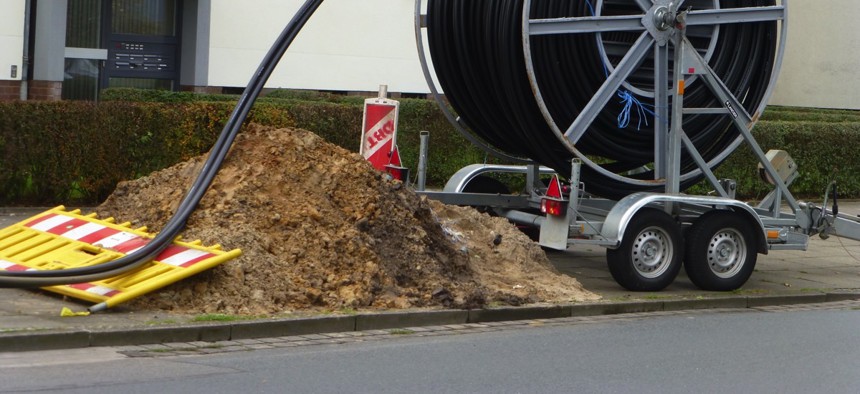A Guide to Treating Internet Access Like Critical Infrastructure (Because It Is)

Fiber optic cable Guentermanaus / Shutterstock.com

Connecting state and local government leaders
High-quality broadband networks are improving state and local economies and services where they’re embraced, per a recent Next Century Cities report.
Next Century Cities has developed a policy agenda for state and local officials promoting its lone goal: high-quality broadband networks for everyone.
The non-profit coalition of local governments, which advocates for the expansion of high-speed broadband Internet networks, launched in October 2014 with 32 cities, but has since grown to include 100 communities. Its membership roster that includes a larger cities like Boston, Kansas City and Charlotte; county governments like Montgomery County, Maryland, and Medina County, Ohio; and smaller- to medium-sized cities like Ammon, Idaho, Hays, Kansas, and Roanoke, Virginia.
“Connecting 21st Century Communities: A Policy Agenda for Broadband Stakeholders” stresses cross-sector collaboration involving philanthropies and key citizen leaders when crafting municipal codes, reforming federal laws and starting fast, public Wi-Fi projects.
Improvements in health services, small business climates and property values have been seen in jurisdictions of all sizes that made high-quality broadband available to residents.
“In the 21st century, Internet access has emerged as more than just an information superhighway—it has become critical infrastructure—connecting citizens, businesses, and communities alike to new opportunities,” said Deb Socia, Next Century Cities executive director, in the announcement. (Read Deb Socia’s June 2 Route Fifty guest article on community wireless networks.)
The agenda recommends local governments plan broadband projects the same way they do transportation projects, as investments in infrastructure—streamlining permitting and adopting “dig once” policies benefiting internet service providers (ISPs):
For instance, requiring every provider to bury fiber to connect their subscribers reduces the number of service providers able to compete. That is why many communities have created “dig once” policies to ensure conduit and fiber are available for lease on reasonable terms.
The fiber can be placed as part of other projects or required during construction and be running through most of a community within a decade. Santa Monica, California, laid extra conduit while connecting traffic signals to reduce congestion for millions of dollars in revenue and savings, not having to do the work separately at a later date.
State governments prove great broadband awareness and funding mechanisms while eliminating regulatory barriers:
Building middle mile connections, most notably open access approaches that ensure multiple providers can use the infrastructure, will allow ISPs (particularly small private and community networks) to offer higher capacity connections at reasonable prices. And when built with modern technology, this approach may allow ISPs to offer their services anywhere the middle mile can connect them to open last mile networks.
Kentucky and Sydney-based global investment banker Macquarie Capital are in talks to build an open-access middle mile network statewide, thereby reducing fees to access the rest of the Internet in small ISPs.
At the federal level market competition needs to be protected, according to the agenda:
The federal government has the authority to prevent market consolidation and mergers that are not in the public interest. In recent years, the Department of Justice and Federal Communications Commission have stopped mergers between AT&T/T-Mobile and Comcast/ Time Warner Cable. Both would have allowed firms that already have significant market power to substantially increase it, which would harm competition and economic outcomes throughout society. However, even as presently constituted, the large cable companies have the power to engage in predatory pricing to thwart competition (as well as engage in a variety of other anti-competitive tactics). The federal government should take a stronger role in limiting the power of the largest firms to ensure small firms are able to enter the market and compete.
More accurate national data collection on broadband adoption, service availability, costs, and low-income access is necessary to prevent residents from being misled into buying homes they think have high-speed Internet already.
Aside from funding and advocacy, philanthropies are well-placed to share broadband best practices and fund high-impact research like the Open Technology Institute at New America is doing on deployment models and costs.
Engaging communities via libraries, schools, places of worship, and other “anchor institutions” will educate them on broadband and generate the necessary political support, so long as state and local officials are honest about the level of service they can provide low-income resident and when.
Dave Nyczepir is News Editor for Government Executive’s Route Fifty.

NEXT STORY: Cities show how to make open data usable





